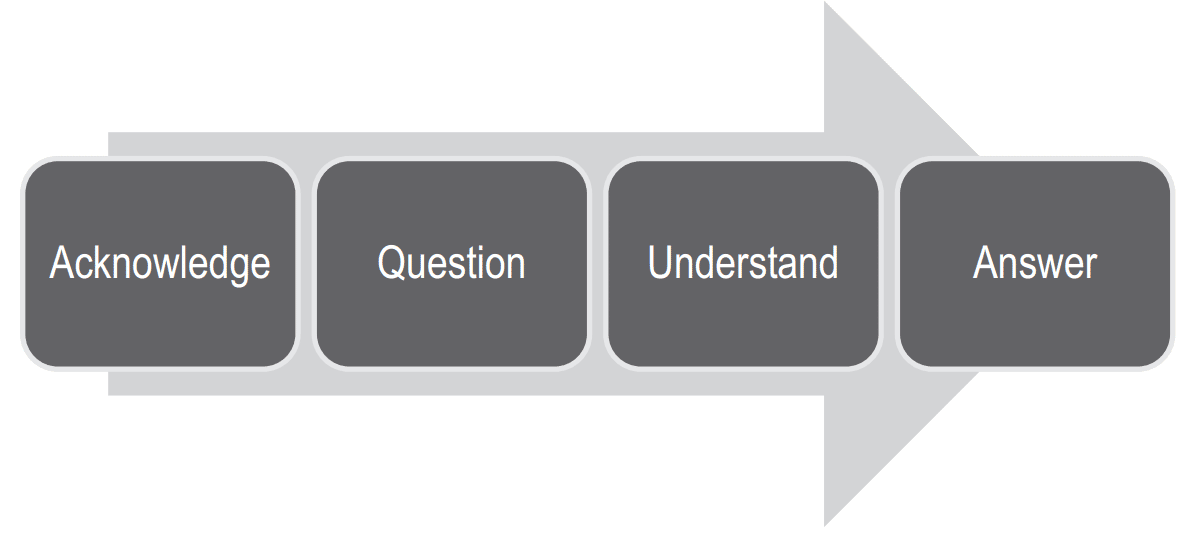Your job is to deliver excellent customer service at all times. However, sometimes, no matter how hard you try, you will find yourself dealing with a customer complaint. Complaints from customers happen when you least expect them and can often be difficult to deal with.
During your career within the retail industry, you will undoubtedly come across many different types of un-satisfied customers. It is essential that you develop the skills and knowledge to successfully handle all types of customers.
It is estimated that:
- 91% of unhappy customers will not do business with you again, and
- Only 4% of unhappy customer will actually tell.
The popularity of social media networks such as Facebook, Twitter, etc. means that an unhappy customer can share their experience with many more people than they were able to in the past.
To learn how to steer your success as a team leader, the ARA Retail Institute runs multiple workshops on leadership and team culture. Join the ARA Retail Institute in their latest workshop on developing a category financial plan.
{{cta(‘0a3fd474-30d6-44b6-8093-f4cb2bf50808’)}}
How to handle your customer complaints
In these situations, you must remember that the customer honestly believes that they have a legitimate problem. Handling all customers with problems tactfully and thoughtfully is critical to retaining them. There is a four-step strategy that can be used to deal effectively with problems. This strategy is called AQUA. This acronym stands for:

Step 1 – acknowledge
An important part of dealing with a difficult customer is to acknowledge their complaint or problem-to communicate to them that you are really listening to them. It is important that you help to reassure your customer and that you remain positive.
Step 2 – question
Once you have listened thoroughly to your customer’s difficulties, you are ready to move on to the second part of the AQUA acronym, which is ‘question’. It is important to make appropriate use of open and closed questions in order to gain an accurate understanding of the issues:
- Open questions are used to get extra information from the customer.
- Closed questions are used to confirm what the customer is telling you.
Step 3 – understanding
Whilst questioning, it is also vital that you again listen to your customer’s answers. To show your understanding, it is useful to clarify the customer’s issue. This can be achieved by putting the issue into your own words, and providing an opportunity for the customer to respond.
Step 4 – answer
Your answer, or solution to the problem, is the strategy that you propose to the customer to gain a positive outcome. Your answer should always be within store policy, and should aim to get the best possible outcome both for the business and the customer.

Compliance with store policy
Many customers will judge your customer service standards by the way in which your store handles customer complaints.
When dealing with a complaint, it is best to take a proactive approach, rather than having to be reactive. This helps to ensure that the staff member can remain in control of the situation at all times. The easiest way to achieve this is for all team members to have a good understanding of the company policy for handling customer complaints.
When the problem is being passed onto someone else, you should still follow through to ensure that the problem does actually get resolved. This will prevent customers from becoming frustrated and feeling that they are getting the ‘run around’. To prevent the customer from having to repeat the problem to the new person, ensure that you provide all relevant details about the situation. It is also important to give the customer an estimate of how long they will need to wait for a response. That way, you will still appear professional in the eyes of the customer.
About ARA Retail Institute
ARA Retail Institute is Australia’s leading retail training provider for both accredited and non-accredited learning programs. For more information, please visit: www.retailinstitute.org.au




















